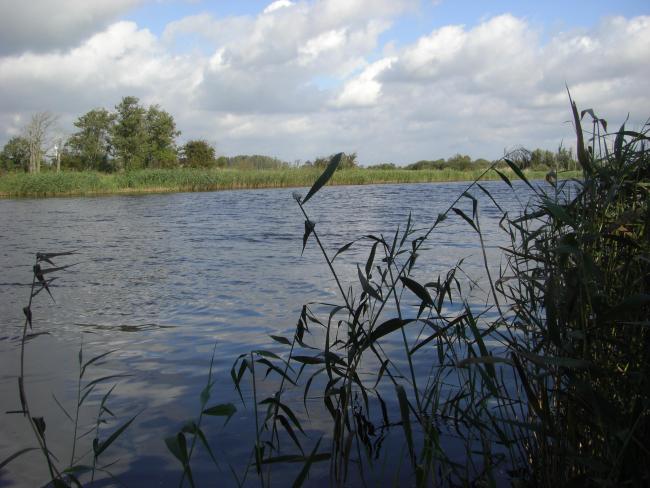Helge å
Helge å
- Country:
- Sweden
- Site number:
- 16
- Area:
- 8,042.0 ha
- Designation date:
- 05-12-1974
- Coordinates:
- 55°58'53"N 14°11'16"E
Carousel
CarouselMaterials presented on this website, particularly maps and territorial information, are as-is and as-available based on available data and do not imply the expression of any opinion whatsoever on the part of the Secretariat of the Ramsar Convention concerning the legal status of any country, territory, city or area, or of its authorities, or concerning the delimitation of its frontiers or boundaries.
Located in Scania Province, the Site consists of the lower stretch of the Helge å River to its outlet into the Baltic Sea, as well as two shallow and nutrient-rich freshwater lakes, reedbeds, scrubs, extensive wet grasslands, wet forests and alluvial forests. The Site supports biological diversity characteristic of the European Continental region as well as a number of nationally threatened species of plants, birds, mammals, fish and amphibians. Thousands of ducks and internationally important numbers of bean goose Anser fabalis and common crane Grus grus stage at the Site. The wetland provides sediment and nutrient retention and export as well as important hydrological services such as water purification and flood control. Human activities include fishing and cattle grazing as well as recreation and tourism. The disappearance of the formerly extensive common club-rush Schoenoplectus lacustris has led to changing hydrological conditions, exposure to wind, and fewer nesting opportunities for wetland birds. The common reed Phragmites australis has also decreased; the reasons for these changes are not clear but overgrazing by greylag goose and cattle as well as floods in 2007 have probably contributed. Investigations are ongoing to find what measures have to be taken. Various conservation measures have been taken to improve the opportunities for nesting and resting birds, fish and plants. The catfish Silurus glanis has been reintroduced and the population is increasing. The Site is noted for its innovative nature tourism activities; a new visitor centre was inaugurated in 2010.
Administrative region:
Skåne
Global international designation:
- UNESCO Biosphere Reserve
National legal designation:
- EU Natura 2000 SAC (1) - Helgeå
- EU Natura 2000 SAC (10) - Håslöv
- EU Natura 2000 SAC (11) - Araslövsjön
- EU Natura 2000 SAC (12) - Lingenäsen
- EU Natura 2000 SAC (13) - Västra Fäladen
- EU Natura 2000 SAC (14) - Hercules
- EU Natura 2000 SAC (2) - Pulken
- EU Natura 2000 SAC (3) - Egeside
- EU Natura 2000 SAC (4) - Prästängen
- EU Natura 2000 SAC (5) - Vramsåns mynning
- EU Natura 2000 SAC (6) - Hammarsjön
- EU Natura 2000 SAC (7) - Gamlegården
- EU Natura 2000 SAC (8) - Åsumallet
- EU Natura 2000 SAC (9) - Björkhäll
- EU Natura 2000 SPA (1) - Egeside-Pulken-Yngsjö
- EU Natura 2000 SPA (2) - Vramsåns mynningsområde
- EU Natura 2000 SPA (3) - Hammarsjöområdet
- EU Natura 2000 SPA (4) - Araslövsområdet
- Nature reserve (1) - Åby ängar
- Nature reserve (10) - Håslövs ängar
- Nature reserve (11) - Årummet
- Nature reserve (12) - Isternäset
- Nature reserve (13) - Näsby fält
- Nature reserve (14) - Fredriksdalsviken
- Nature reserve (2) - Pulken-Yngsjö
- Nature reserve (3) - Egeside
- Nature reserve (4) - Rinkaby och Horna ängar
- Nature reserve (5) - Vramsåns mynning
- Nature reserve (6) - Hercules
- Nature reserve (7) - Horna sjömark
- Nature reserve (8) - Hovby ängar
- Nature reserve (9) - Åsums ängar och Åsumsallet
Regional (international) legal designations:
- EU Natura 2000
Last publication date:
06-04-2017
Ramsar Information Sheet (RIS)
- SE16RIS_1704_en.pdf
- SE16RISformer_EN.pdf
- SE16RISformer_150218.pdf
- SE16_map1503.pdf
Archived RIS
Site map
Additional reports and documents
Other published literature

